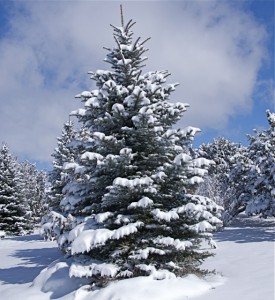Scientific Name: Picea pungens
Plant Family: Pineaceae (Pine)
Common names: Colorado blue spruce, Blue spruce
Article and photos by Janice Tucker (& Sonny Tucker)
The Colorado blue spruce, with its near perfect conical shape, upright growth and bluish evergreen foliage, makes a lovely live Christmas tree. Nothing is prettier in a winter landscape than a Blue spruce with a layer of snow resting atop the needles of its tiered branches.
Native to the central and southern Rocky Mountains and encompassing the states of Colorado, New Mexico, Arizona, Utah, Wyoming and Idaho, the Colorado blue spruce is also grown commercially for landscaping uses in the northeastern United States and southeastern Canada. It is the state tree of Colorado.
Growing in altitudes of 5740 to 9800 feet, the Colorado blue spruce (Picea pungens) is a medium-sized, evergreen conifer that can reach a height of 98 feet and in some cases up to 150 feet and 7 to 10 feet at its widest point. The tiered branches extend from a trunk of thin, gray bark. The branches are widest at the base, gradually becoming narrower until reaching a single, small branch at the very top. The stiff, dense, blue-green needles render the blue-green hue that gives this tree the name of “Blue spruce.” Its long, pendulous cones, which change from a reddish purple to a soft, light brown after pollination, dangle gracefully from the branches. The cones have flexible scales and encase elongated, slender, black seeds.
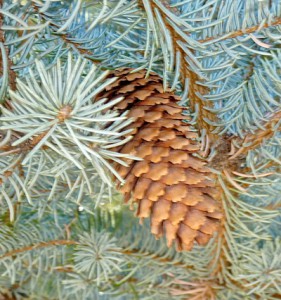
Blue spruce cone (Janice Tucker)
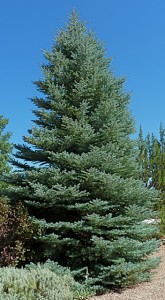
Picea ‘Fat Albert’ (Janice Tucker)
Picea pungens has many cultivars and is one of the most preferred trees to be selected for gardens and large parks. Among the favorites of the cultivars is the Picea ‘Fat Albert,’ named for comedian Bill Cosby’s animated cartoon character that was popular in the late 1970s. ‘Fat Albert’ is a dense, broad, conical-shaped tree with blue-gray needles on closely tiered branches. It is a slow grower that normally reaches a height of 20 feet but in perfect conditions can grow as tall as 40 feet.
The Blue spruce prefers full or partial sun. It requires medium amounts of water and does best when watered on a regular schedule. A well-balanced fertilizer at least once a year is helpful to keep the tree vigorous and healthy. Otherwise, it is virtually maintenance-free. Its uppermost branch is an open invitation to a variety of birds that make good use of it as a stage to belt out arias of melodic birdsong or to use as a perch to survey a panoramic view. It is resistant to rabbits and deer and tolerates air pollution.
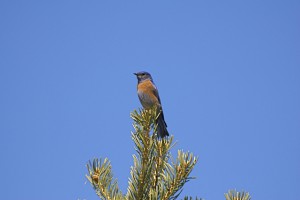
Bluebird on top of Blue spruce Sonny Tucker
The genus Picea means “from pitch” and refers to the tree’s resinous sap. The definition of the species pungens is “sharply pointed, spiny,” which describes the needle texture of the Blue spruce.
Several Native American tribes use the Blue spruce in ceremonial rites. Infusion of the needles in a warm bath is said to relieve the symptoms of rheumatism. Other concoctions of the needles or other parts of the tree have been used in the treatment of colds or stomach ailments. Some Native American tribes give Blue spruce twigs as presents to bring the recipient good luck.
Give yourself the gift of a live Colorado blue spruce and enjoy watching it grow a little bit each year. Its majestic presence in the landscape adds elegance and beauty whether it is gracing a home garden or growing in a mountain forest. Maybe it will bring you good luck too.
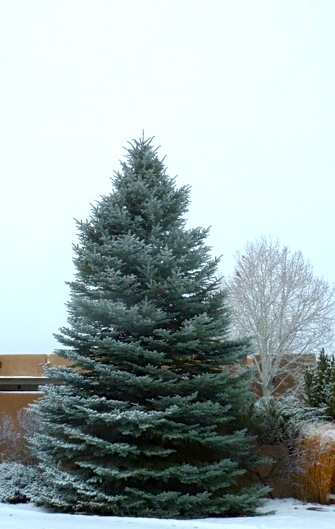
Picea ‘Fat Albert’ in winter (Janice Tucker)

